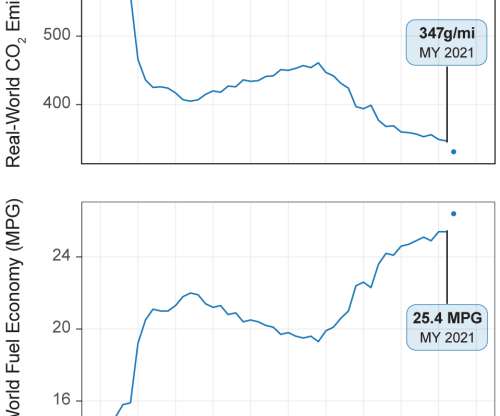EPA trends report finds MY 2021 fuel economy remained flat at a record high while CO2 levels hit new low
Green Car Congress
DECEMBER 13, 2022
All vehicle types are at record low CO 2 emissions; however, the market shift away from cars and towards sport utility vehicles and pickups has offset some of the fleetwide benefits. Since MY 2004, average fuel economy in the US has increased by 32%, or 6.1 Since MY 2004, CO 2 emissions have decreased 25%, or by 114 g/mi.



















Let's personalize your content